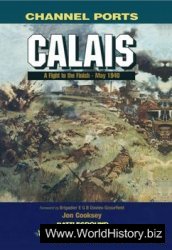Several times a year in most English villages, the
villagers, or at least some of them, gathered for
court proceedings during which the legal and
fi nancial affairs of both the lord and the village were
handled. The courts often went beyond what we
would recognize as judicial activities and issued new
ordinances – which historians now term bylaws – in
the name of the lord and the village to regulate
activities in the village or its fi elds or forests. The
following are a few of the many bylaws issued by
the village of Great Horwood in central England.
1433
It is ordered by all the tenants that no one
shall have his beasts on the green of the town
by night until the end of autumn next to
come under pain each one of 4d. [d. = denarius,
or penny]. And there were chosen as
wardens John Hayes and Robert Baynard.
And that every tenant be at Nether ford next
Monday about Vespers with tools to clean the
watercourse under pain of 1d. for default.
1465
It is ordered by the consent of all the tenants
there that no one henceforth shall willfully
allow his foals openly to go into the fi elds of
grain after they are three weeks old unless
tethered to their mothers under pain of each
one doing the contrary paying 12d. namely
for each foal every time.
1480
The township of Great Horwood is ordered
to make anew part of the butts [mounds of
earth on which targets for practicing archery
are set] before the Feast of the Nativity of
St. John the Baptist [June 24] under pain for
each one in default of 8d., 4d. of which is to
go to the parish church.
And if any one shoots his arrows at the metes
[boundaries] and does not close the bars [of
the gate] after him he shall forfeit to the lord
as often as he does it 4d.
1503
It is ordered by common consent and assent
that all tenants having hedges on the eastern
part of the town aforesaid shall cause them
well and suffi ciently to be repaired, under pain
for each of them falling into default of 12d.
1534
It is ordered that no one shall harbour or
entertain any woman or women of ill fame
more than one night under pain for each delinquent
of 6s. 8d. [s. = shilling, worth 12d.]
(From Warren O. Ault, Open-fi eld Farming in
Medieval England: A Study of Village By-Laws
[London: George Allen and Unwin, 1972], pp. 125,
132, 134, 141.)
On the eastern and southern shores of the Baltic, powerful nobles were also the
most important group politically and economically. Rulers in this area, such as the
dukes of Prussia, the grand dukes of Lithuania, the kings of Poland, and the princes
of Muscovy, relied on nobles for support during disputes over borders and royal
successions. Local lords were the ultimate legal authority in their own territories
with little interference from royal offi cials, and they used this power to restrict the
rights of peasants and townspeople. By contrast, the Ottoman sultans in the 1400s
were developing centralized imperial institutions to rule their ever-expanding territory.
They created a trained army and corps of administrative and tax offi cials, often
co-opting existing local and religious authorities rather than displacing them. Thus
within the Ottoman Empire regional territories such as Bulgaria, Serbia, Kosovo,
and Albania still existed, though they were increasingly dependent on the sultan’s
government.
Throughout all of Europe, then, the mid-fi fteenth century was a period in which political
boundaries were shifting, as was the importance of different types of boundaries.
Many lines on the map might more accurately be depicted as broad or blurry stripes,
for frontier areas often had cultures and traditions distinct from those of the territories
on either side.
There is another problem with viewing map 3 as a representation of political units
in mid-fi fteenth-century Europe: its scale. Other than in times of warfare, the political
units that had the most impact on people’s lives, and in which they were most likely to
have some voice, were local. During the Middle Ages, in many parts of Europe villages
developed political structures of their own that regulated what went on in the village
and conducted relations with authorities beyond the village. Villages became what are
often called “communes,” with institutions of self-governance. These institutions were
generally composed of the adult male heads of household, or a subset of these, who decided
which crops the village would plant, supervised the harvest, watched over the village
mill, and carried out similar functions. In some places village councils and courts
had the authority to issue ordinances and make legal decisions, either in conjunction
with the local lord or on their own.
Institutions of governance were even stronger in towns and cities, which won their
independence from local lords in the twelfth and thirteenth centuries. Towns drew
up charters that established administrative and supervisory offi ces, such as mayors,
quartermasters, gate-keepers, tax collectors, and market overseers; they set procedures
for tax collection and the maintenance of city walls and streets; they established
citizens’ militias, orphanages, various types of courts, municipal brothels and
bathhouses, and funds to provide relief for the poor. On a day-to-day basis these
village and city authorities had more control over many aspects of life than any territorial
ruler.




 World History
World History









